#spanishconquest
Explore tagged Tumblr posts
Text
youtube
As we explore the Aztec way of life, we'll uncover their sophisticated agricultural systems, thriving trade networks, and remarkable artistic and architectural feats. We'll also confront the more controversial aspects of Aztec culture, such as human sacrifice and the use of tribute to maintain their empire.
#AztecHistory#AztecEmpire#MesoamericanCivilization#Tenochtitlán#LakeTexcoco#AztecSociety#AztecCulture#AztecReligion#HumanSacrifice#AztecArchitecture#AztecArt#HernánCortés#SpanishConquest#IndigenousAlliances#FallofAztecs#AztecLegacy#MexicanHistory#AncientAmericas#PreColumbianHistory#HistoryDocumentary#Youtube
0 notes
Text
Codex Borbonicus or Codex Cihuacoat
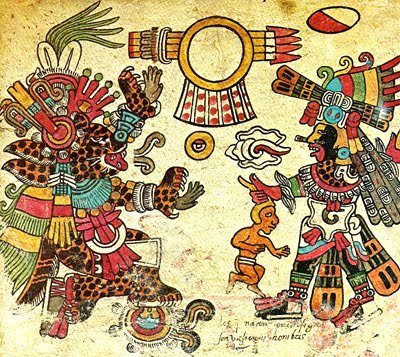
Codex Borbonicus also known as Codex Cihuacoat was written just a few years before the Spanish conquest of the Aztec Empire. Only a few of these codices are known, since the fourth tlatoani Itzcoatl ordered them all burnt because it was "not wise that all the people should know the paintings". Like all pre-Columbian codices, Codex Borbonicus is entirely pictorial, although some Spanish descriptions were later added.
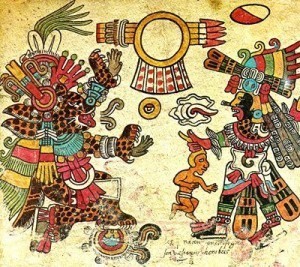
Codex Borbonicus Codex Borbonicus can be divided into three sections. The first section is one of the most intricate surviving divinatory calendars (or tonalamatl). Each page represents one of the 20 trecena (or 13-day periods), in the tonalpohualli (or 260-day year). The second section of the codex documents the Mesoamerican 52 year cycle, showing in order the dates of the first days of each of these 52 solar years. The third section is about rituals and ceremonies, particularly those that end the 52-year cycle, when the "new fire" must be lit. Download the Codex Borbonicus here:

Codex Borbonicus or Codex Cihuacoat
What does the Codex Borbonicus teach?
The Codex Borbonicus is an ancient Mesoamerican codex, which is believed to have been created in the 16th century in Mexico, likely in the vicinity of the Aztec capital, Tenochtitlan. It is one of the few surviving pre-Columbian manuscripts from the Americas. The codex primarily serves as a pictorial and symbolic representation of various aspects of Aztec culture, religion, and calendrical systems. Some of the key teachings and information that can be derived from the Codex Borbonicus include: - Calendar and Timekeeping: The codex contains intricate calendars used by the Aztecs, including the tonalpohualli (a 260-day ritual calendar) and the xiuhpohualli (a 365-day solar calendar). It provides information on the ritual and agricultural events associated with each day of these calendars. - Rituals and Ceremonies: The codex illustrates various religious ceremonies and rituals, such as sacrifices, festivals, and divination practices. It includes images of gods and goddesses and the offerings and actions associated with these rituals. - Deities: The Codex Borbonicus features depictions of Aztec gods and goddesses, along with their attributes and symbolic representations. It offers insights into the religious beliefs and pantheon of the Aztecs. - Agriculture and Farming: There are sections in the codex that depict agricultural practices, including planting, harvesting, and the agricultural calendar. This information was essential for the Aztecs' agricultural activities, which were closely tied to their religious and cultural practices. - Cosmology: The codex contains imagery related to the Aztec cosmology and their understanding of the universe. This includes depictions of celestial bodies, such as the sun and moon, as well as celestial events. - Historical Events: While the Codex Borbonicus is primarily focused on religious and calendrical information, it also includes some historical events and rulers' names. However, it is not as detailed in this regard as some other codices. It's important to note that the Codex Borbonicus, like other pre-Columbian codices, relies heavily on pictorial symbols and images, often with accompanying glyphs and hieroglyphics. Interpretation of its contents has been a subject of ongoing research and study among scholars to fully understand and appreciate its cultural and historical significance.
THE CODEX BORBONICUS - Browsing Facsimile Editions
Read the full article
#AztecEmpire#ceremonies#codex#CodexBorbonicus#CodexCihuacoat#Mesoamerican#rituals#Spanishconquest#tlatoaniItzcoatl#tonalamatl#tonalpohualli#trecena#xiuhpohualli
0 notes
Photo

Today is #Day7 and #publicationday! www.books2read.com/idie All Amazon links here: mybook.to/idie A new and FREE extract available here: https://books2read.com/mama And there's a discount for anyone who purchased Part 1. Just DM me! :) #historicalwomen #incawomen #intrepid #inca #Peru #Chile #Boliva #Ecuador #Argentina #Colombia #nonfiction #strongwomen #precolumbian #prehispanic #SpanishConquest #thankyou #incaempire #incacivilization #womeninhistory #historicalwriter #SouthAmerica #amreading https://www.instagram.com/p/CIQHMx9Hmo3/?igshid=m3v31abor77p
#day7#publicationday#historicalwomen#incawomen#intrepid#inca#peru#chile#boliva#ecuador#argentina#colombia#nonfiction#strongwomen#precolumbian#prehispanic#spanishconquest#thankyou#incaempire#incacivilization#womeninhistory#historicalwriter#southamerica#amreading
1 note
·
View note
Video
instagram
Venturing around the city, saw an abandoned army barrack during the Spanish colonization. Slipped my way in while no one was looking. Probably built around the 19th century this looked to have 2 bathrooms as you can see the first few rooms as we move to the left. At the end is a bizarre way of nature's strength and domination against all things built by man. . . . . #bacalar #history #spanishconquest #mexico #nature #trees #cacaoexpedition #chocovivogoesabroad #travel #naturevsman #beautyinstrangeplaces (at Bacalar, Yucatan, Mexico) https://www.instagram.com/p/Bxf_t8oBdsn/?igshid=1ho7jlrfgwdp0
#bacalar#history#spanishconquest#mexico#nature#trees#cacaoexpedition#chocovivogoesabroad#travel#naturevsman#beautyinstrangeplaces
1 note
·
View note
Photo

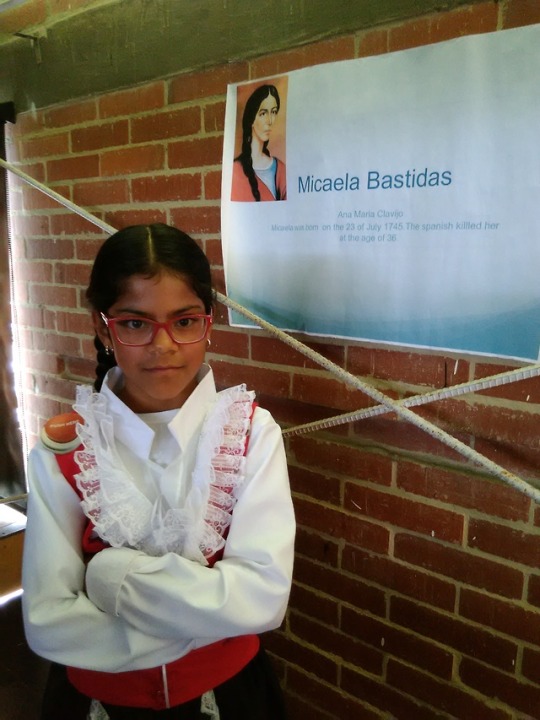




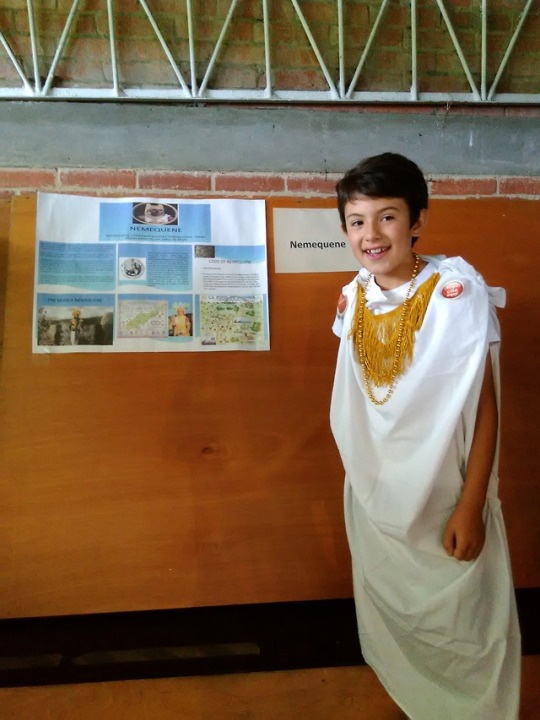

A small selection of photos from our Conquest and Colony Wax Museum. Students learned deeply about one historical figure then taught museum visitors about their lives in either English ir Spanish, depending on which button the visitor pushed.
1 note
·
View note
Photo
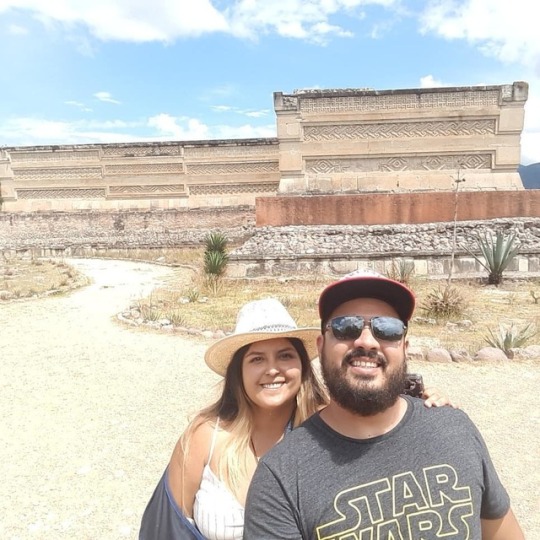
Most people like to relax on #vacations, I like to #explore. This is #mitla in the #mexican state of #oaxaca. This temple was built here in the #americas 1000 years before christ by the #zapotec #civilization. It was the center of #religion in the region before the #spanishconquest. #nerdmoment #history #livingthedream #mexicovacation #mexico (at Mitla) https://www.instagram.com/p/B2VHBejjom0cLtSO1E_t-3sW_zCcAPGEoGOq1A0/?igshid=rkvijx7nuvk4
#vacations#explore#mitla#mexican#oaxaca#americas#zapotec#civilization#religion#spanishconquest#nerdmoment#history#livingthedream#mexicovacation#mexico
0 notes
Photo
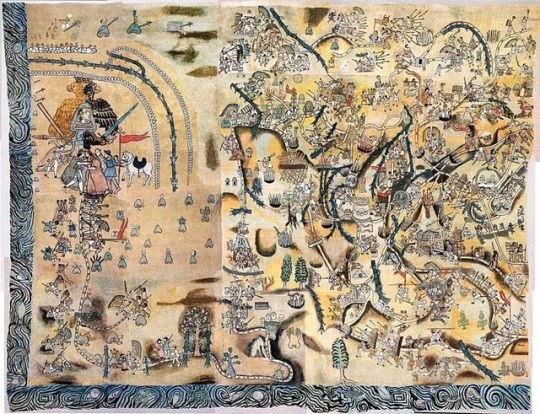
#LienzodeQuauhquechollan #nahua #guetamala #1500s #spanishconquest This lienzo(cloth painting) of the Nahua people recounts when the Spanish came in and took over Guetamala. The painting was done by the Nahua allies of the Spanish. In this depiction you also see the presence of an African man and there's a clear distinction between him, the Spanish, and the two different Nahua factions. https://www.instagram.com/p/Br_ZqxpBlsZ/?utm_source=ig_tumblr_share&igshid=1c0fsrp84wuxj
0 notes
Photo

The #sanfrancisco neighborhood of #telde #grancanaria the oldest on the island established before the #spanishconquest . It was a #religious community hence all the crosses around town embedded in the walls. (at Telde)
0 notes
Photo
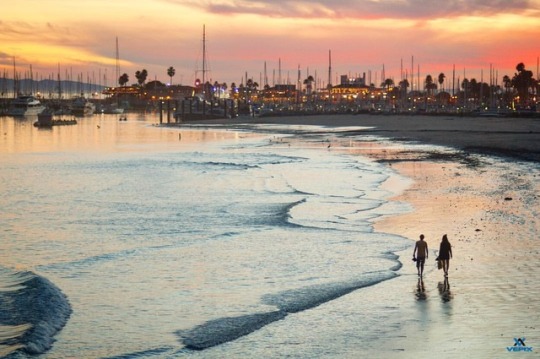
A couple walks on the beach enjoying the sunset. This is one of my favorite cities in California! 😍👍 #hospitalityphotography #hiltonhotel #santabarbara #california #pacificocean #pacificcoasthighway #spanishconquest #travelchannel #travelblogger #travelphotography #luxurytravel #luxurylifestylemagazine #luxuryhomes #lonelyplanet #travelandleisure #travellingthroughtheworld #visitcalifornia (at Santa Barbara, California)
#hospitalityphotography#travellingthroughtheworld#spanishconquest#visitcalifornia#hiltonhotel#luxurylifestylemagazine#travelchannel#california#travelblogger#santabarbara#travelphotography#pacificcoasthighway#pacificocean#lonelyplanet#travelandleisure#luxurytravel#luxuryhomes
0 notes
Photo

Illustration 4 for Bob Gymlan YouTube video titled the Monster of lake tota #dredfunn #freddunn #wip #wipart #wipartwork #youtube #youtuber #youtubechannel #art #artistsoninstagram #artist #artwork #comic #comics #comicart #comicbooks #comicbookart #ink #inkdrawing #inkart #bobgymlan #laketota #lakemonster #lakemonsters #spanishconquest #tota https://www.instagram.com/p/CQobrZ-gj_V/?utm_medium=tumblr
#dredfunn#freddunn#wip#wipart#wipartwork#youtube#youtuber#youtubechannel#art#artistsoninstagram#artist#artwork#comic#comics#comicart#comicbooks#comicbookart#ink#inkdrawing#inkart#bobgymlan#laketota#lakemonster#lakemonsters#spanishconquest#tota
0 notes
Photo

Late 18th century retablo, Spanish tin art, primitive known in Mexico as "Laminas" ! @ designeruniquefinds.com #spanish #tinart #shopify #antiques.com #finearts # scripted religious #exvoto #texas art gallery #spanishconquest
2 notes
·
View notes
Photo
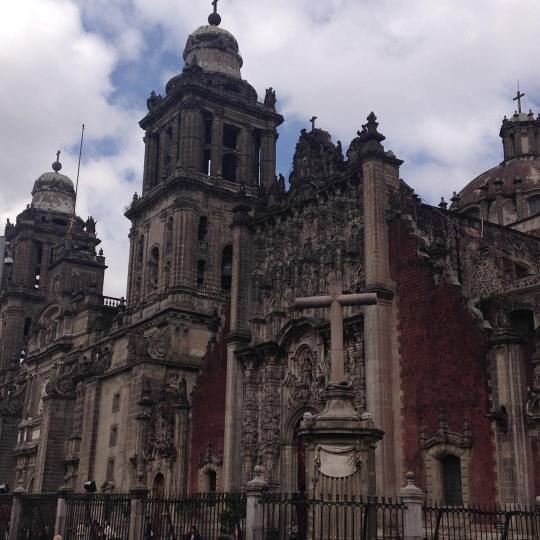
#themetropolitancathedral #mostblessedvirginmaryintoheaven #mexicocity #plazadelaconstitucion #spanishconquest #tenochtitlan #architect #claudiodearciniega #gothic 1813
#mostblessedvirginmaryintoheaven#claudiodearciniega#spanishconquest#architect#gothic#themetropolitancathedral#plazadelaconstitucion#tenochtitlan#mexicocity
0 notes
Photo
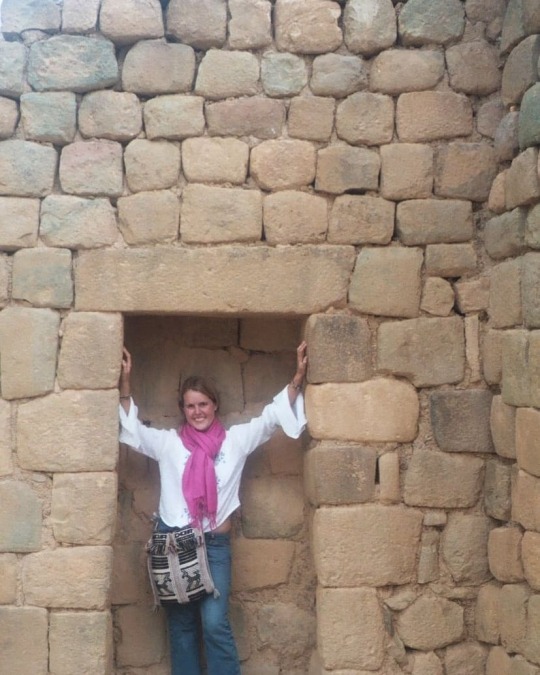
Thank you to those who've bought Part 1 and taken a journey of 300 years with me as we looked at Inca women who lived before the Spanish Conquest. Can't wait to venture onwards another 100 years with you all in part 2! #inca #history #women #peru #spanishconquest #part1 #part2 #ingapirca #incaruins #stonemasonry #precolombian #IntrepidDudettes #grateful #gratitude #journey #300years #historical #historicalwriter (at Ruinas De Ingapirca-Cañar) https://www.instagram.com/p/CGwh8fOAFzF/?igshid=1jy55sglj60yu
#inca#history#women#peru#spanishconquest#part1#part2#ingapirca#incaruins#stonemasonry#precolombian#intrepiddudettes#grateful#gratitude#journey#300years#historical#historicalwriter
1 note
·
View note
Photo

In April 1520, Velázquez sent an expedition to capture Cortés. As Cortés left to fight the expedition, an Aztec revolt began in Tenochtitlán. Cortés returned and obliged Montezuma to face the crowd, but the Aztec leader was struck by a stone and died. There is controversy as to how Montezuma died because Cortés says his own people (the Aztecs) killed him, whereas the Aztecs say the Spanish stoned him to death. The Spanish were driven out of the city, incurring heavy losses.
BBC. BBC News. January 1, 2014. Accessed December 8, 2014. http://www.bbc.co.uk/history/historic_figures/cortes_hernan.shtml.
"Figure 2: Fall of the Empire." Blogspot.com. Accessed December 7, 2014. http://1.bp.blogspot.com/-bXycMRpxE9k/UvmOJwxC0XI/AAAAAAAAABE/CWjnFzzUS-g/s1600/Nuevo Imagen de mapa de bits.bmp.
0 notes
Text
You say tomato I say xitomatl
The tomato has an awesome species name. It's Solanum lycopersicum. Lycopersicum means Wolf's Peach, which has to do with the tomato's close familial relationship with nightshade, a common ingredient in anti-werewolf spells and potions. The common name, as the tomato/tomahto thing might indicate, has gone through many regional variations. Most, including "tomato" are the results of misidentification or names based on perceived similarity to unrelated fruits (Smith, 1946, "The Tomato in America: Early History, Culture and Cookery").
First of all, it's a berry, which is technically a fruit. Culinarily I'm lead to believe its taste classifies it as a vegetable. I bet whoever came up with that classification system is laughing his head off somewhere.
The tomato reached Europe well before a reliable origin was established, and reached North America very late in the game, likely independent of the European imports (ibid).
A man locked in a Philidelphia jail is credited with popularizing the tomato when he planted seeds he'd gotten in South America in the penitentiary garden. He was released before the tomatoes themselves developed, but returned to pick them up (ibid).
These clues lead us to suspect that the criminal could only have been one man...
There is no record of the tomato being eaten in ancient MesoAmerica, but around the time of the Spanish conquest, the Aztecs had domesticated a recognizable breed, likely from wild Chilean plants exported to the north. The Aztecs were already familiar with a smaller, green berry from Mexico, now called the tomatillo (Smith, 1946, "The Tomato in America: Early History, Culture and Cookery;" Cantwell et al., 1992).
It's used in a lot of green salsas
Correctly believing the big red or yellow tomato to be a relative of the tomatillo (though it is a fairly distant one), which the Aztecs called "tomatl," they named the fruit we now know as tomato "xitomatl" or "large tomato." A name perhaps less evocative than "Wolf's Peach" or the Mediterranean alternative "Love Apple;" (Smith, 1946, "The Tomato in America: Early History, Culture and Cookery") tomatl itself derives from "tomana" or "to swell" and means "swelling fruit" (etymonline.com) It was already used in a chili salsa, foreshadowing the early North American development of tomato ketchup (Smith, 1946, "The Tomato in America: Early History, Culture and Cookery").
Perhaps one of the greatest culinary development in history, second to the control of fire.
The Spanish conquistadors didn't have time to worry about correctly recording the names of salsa ingredients (being too busy sacking cities and driving birds to extinction) and referred to both fruits as "tomate." The word "tomate" made it back to Europe, where it became "tomato" (then pronounced tomahto). The practice of eating tomatoes raw was then uncommon in Europe - the kind of thing only done by radicals and Jews (ibid).
The British Jewish population had many shipping ties to South America, and a British, Jewish expat doctor brought at least one cultivar to Virginia, where the word was pronounced "tomayto" (ibid). About two hundred years later, with the help of some Salem canners, they spread across the globe.
-A.G.F.
#tomato#attackofthekillertomatoes#Aztec#Mesoamerica#Spanishconquest#conquistador#history#NativeAmerican#etymology#tomatillo#salsa#chipotle#Hamburgler#McDonald's#Ketchup#Salem#Jewish#Virginia#werewolf#nightshade#apple
2 notes
·
View notes
Photo

Our Lady of the Immaculate Conception Cathedral viewed from the Fort of San Miguel. The city of Campeche was declared Cultural Patrimony of the Humanity by UNESCO. #beautifuldestination #vacationtime #travelphotography #travelblogger #travelchannel #architecture #ancientarchitecture #worldheritage #campeche #yucatanpeninsula #cathedral #worldingram #travelgram #walledcity #spanishconquest #colonial #catholicism (at Campeche City)
#architecture#yucatanpeninsula#colonial#travelblogger#beautifuldestination#campeche#walledcity#spanishconquest#travelchannel#vacationtime#worldingram#catholicism#worldheritage#ancientarchitecture#travelgram#travelphotography#cathedral
0 notes